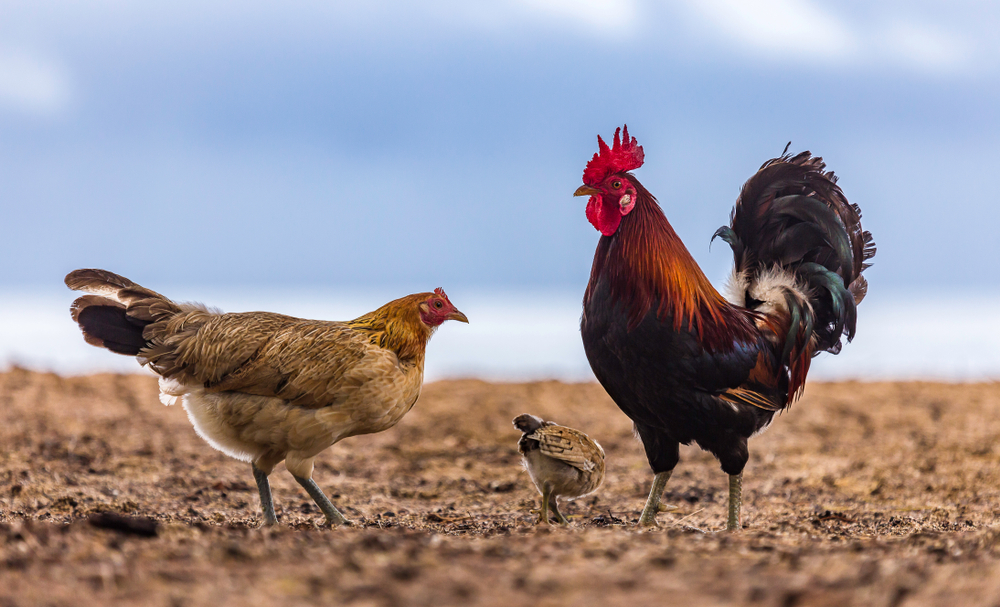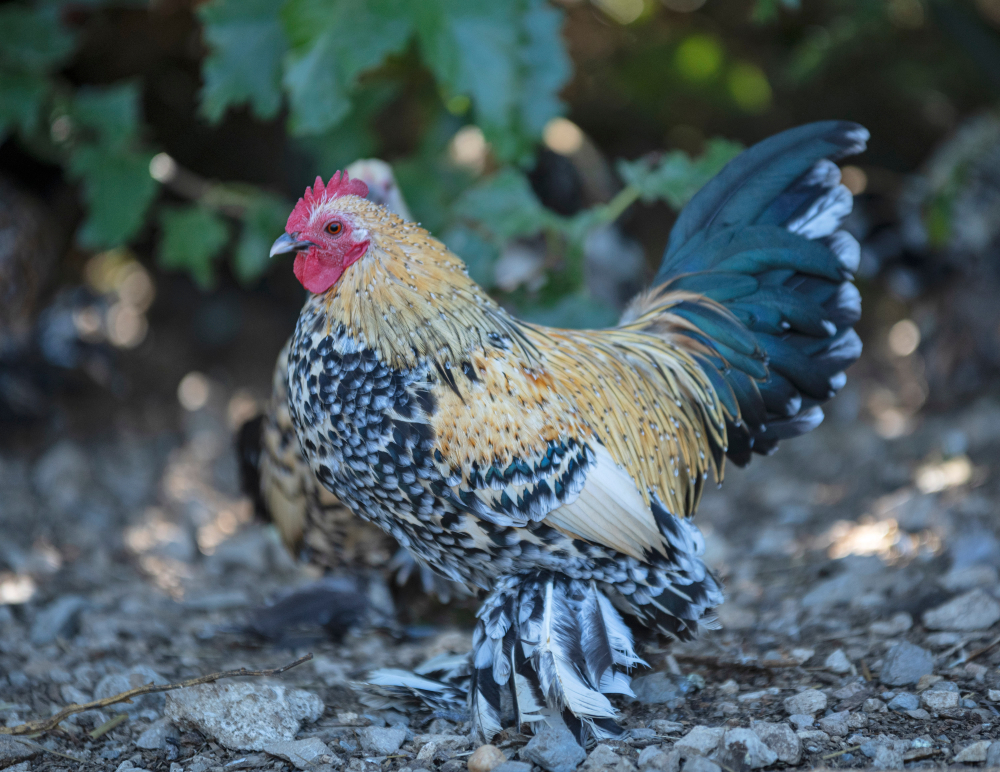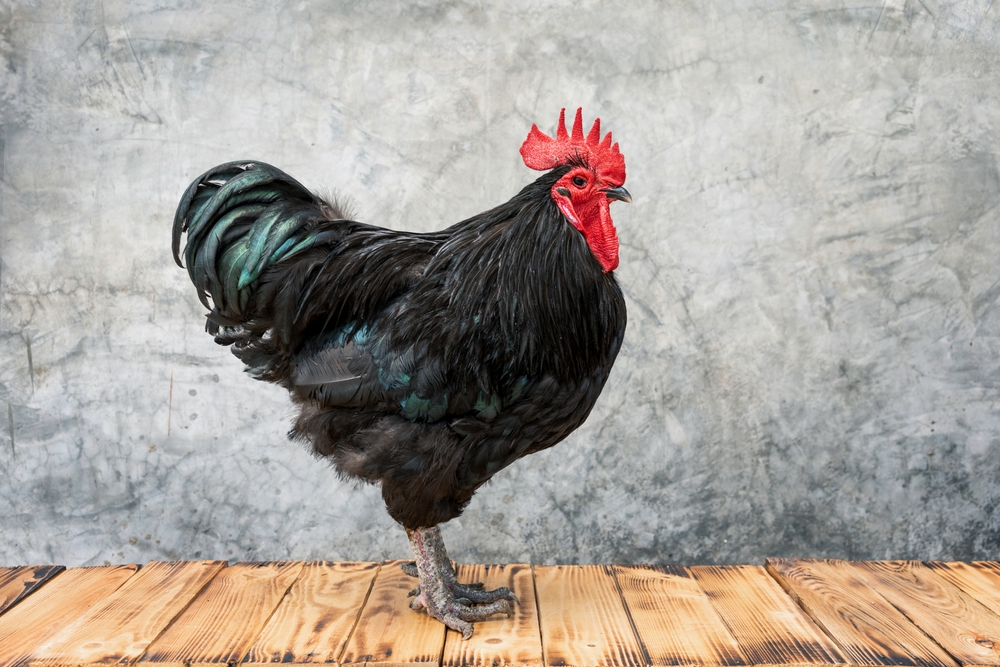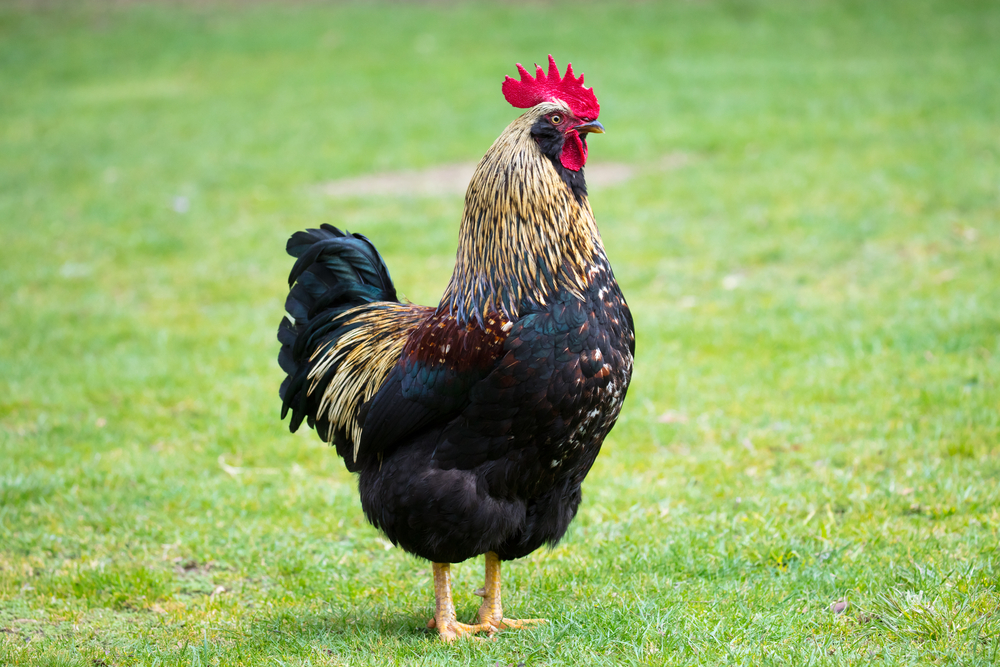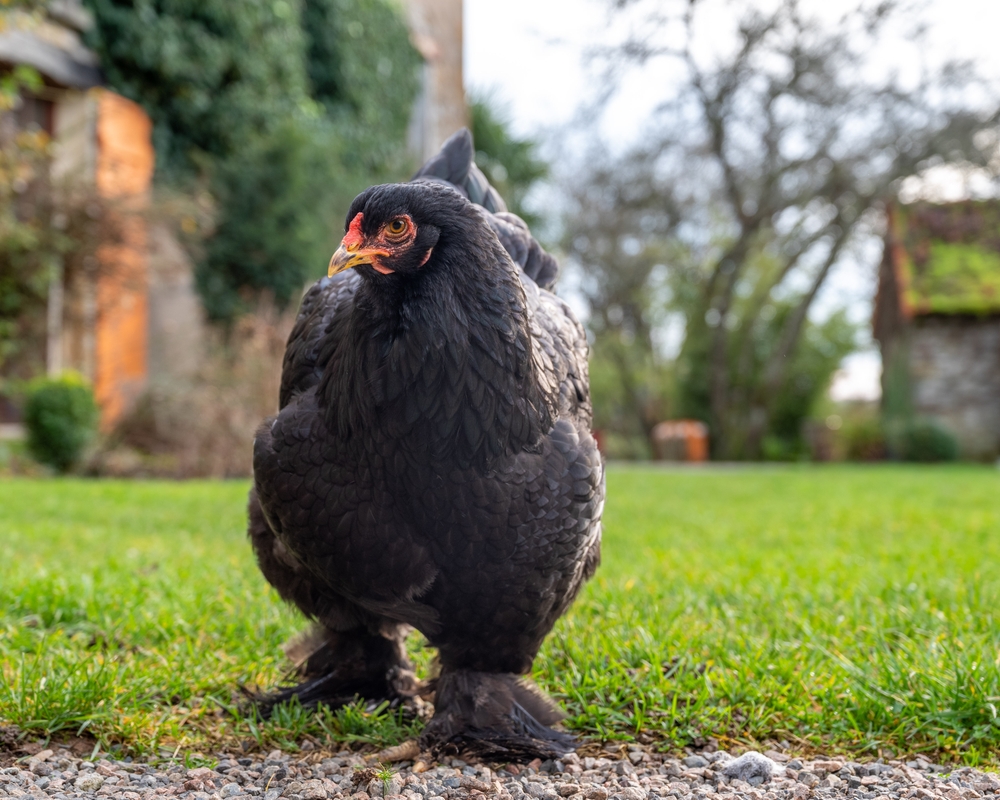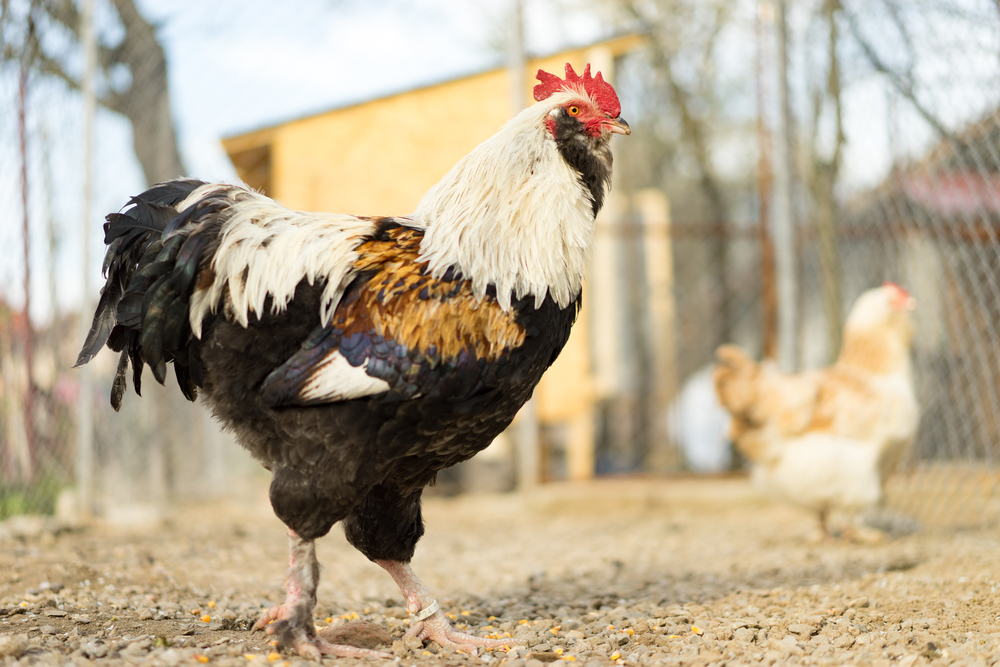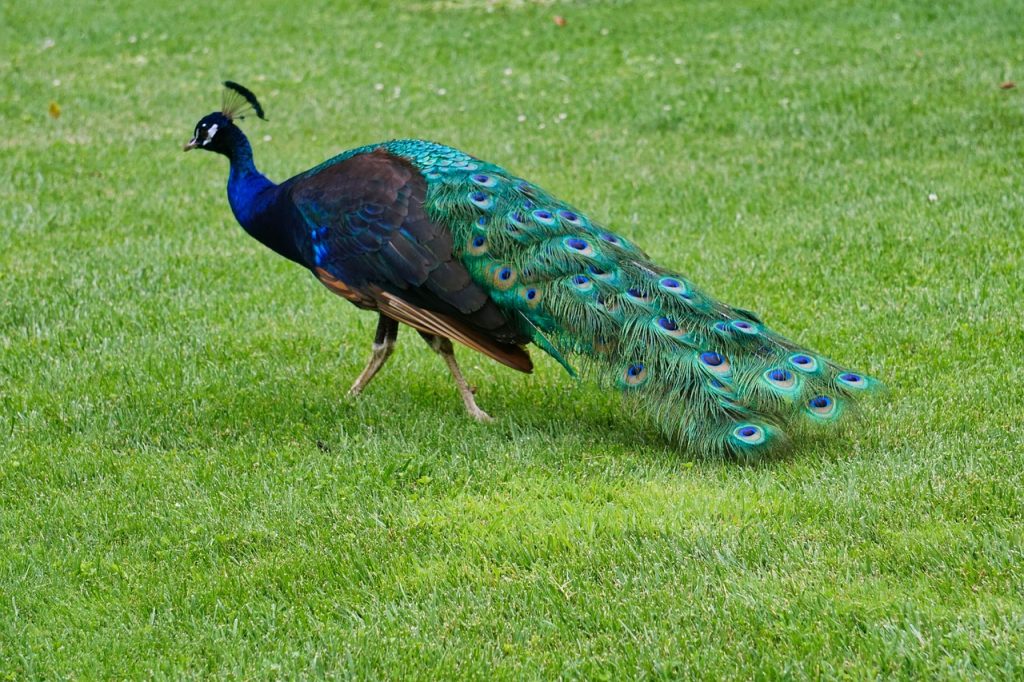Physical Characteristics
Plumage:
Feral Marans retain the rich, attractive feathering of their domesticated ancestors but often show more variation in color due to mixed genetics and natural selection. Common patterns include Black Copper (black body with copper hackles), Wheaten, Cuckoo (barred), and Birchen. In feral conditions, plumage may appear more weathered, with muted tones and extra wear on feather edges. Feathers are close-fitting and glossy, offering good protection against the elements.
Head and Comb:
The head is of medium size, with a single, upright comb of 5–7 points, often slightly irregular due to environmental wear. The comb, wattles, and earlobes are bright red in healthy individuals. Beaks are short, strong, and horn to dark horn-colored, suited for cracking seeds and foraging. Eyes are reddish-orange, providing sharp vision for predator detection and food spotting.
Body:
Feral Marans have a well-muscled, medium-to-large frame, with a deep chest and upright stance. Years in the wild often produce leaner, more athletic builds than in domestic flocks, favoring speed and agility over show-standard proportions.
Legs and Feet:
The legs are strong, clean (feather-free in most types), and slate or horn-colored, depending on the variety. Feet have four toes with hard, well-developed nails for scratching. Skin is white beneath the scales. Legs often show signs of wear from roaming over rough terrain.
Tail:
The tail is medium length and well-feathered, carried at a moderate angle. Roosters have arching sickle feathers, though in feral birds, these may be shorter or more worn due to active foraging and flight from predators.
Size:
Sexual Dimorphism:
Males are larger with more vibrant and iridescent plumage, longer tail sickles, and more prominent combs and wattles. Females have rounder bodies, shorter tails, and more subdued coloring for camouflage.
Feral Marans’ combination of hardy, weather-resistant plumage, athletic build, and retained egg-laying potentialmakes them one of the more adaptable heritage chicken types when living outside of human management.



































































